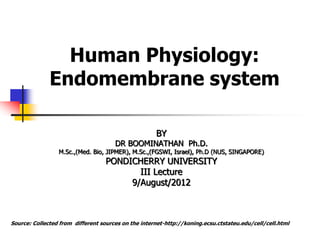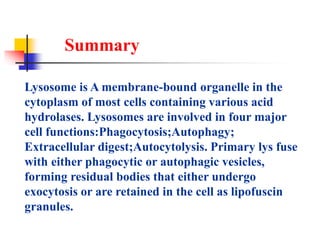The document discusses the endomembrane system, specifically focusing on the endoplasmic reticulum (ER). It describes the structure and functions of the rough ER (RER) and smooth ER (SER). The RER is covered with ribosomes and functions in protein synthesis, modification, and transport. Newly synthesized proteins pass from the RER to the Golgi apparatus. In contrast, the SER lacks ribosomes and functions in lipid and steroid synthesis, calcium storage, and detoxification.


























































































